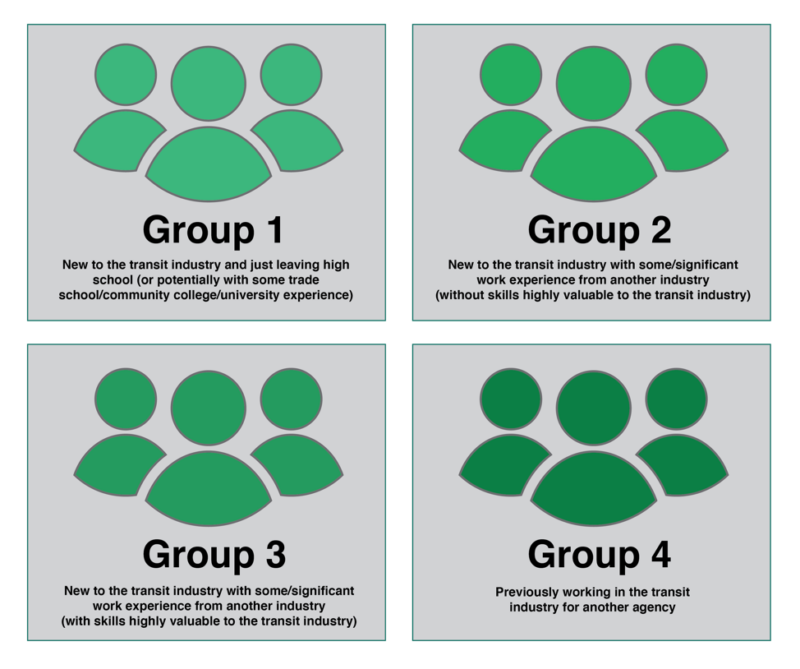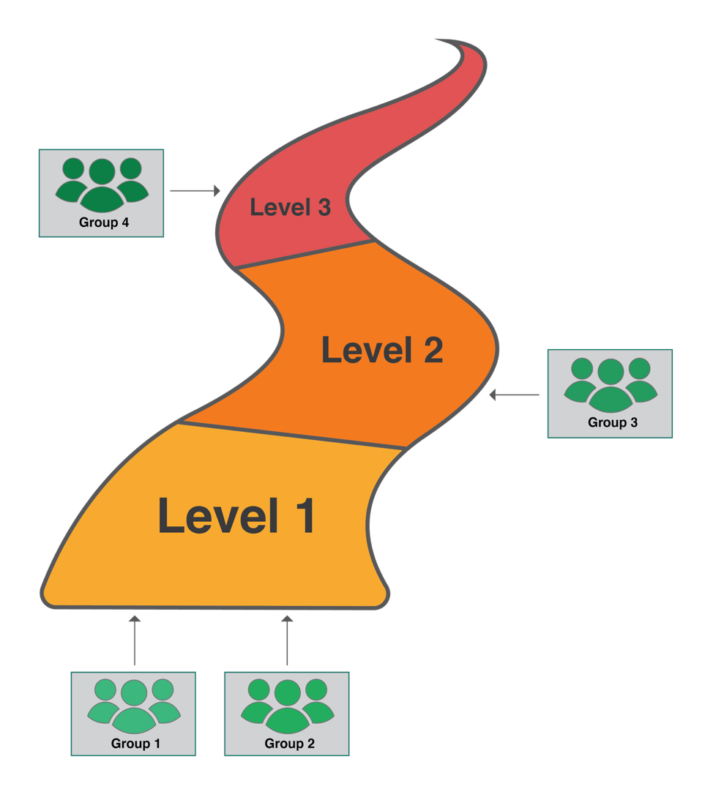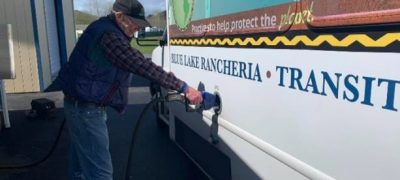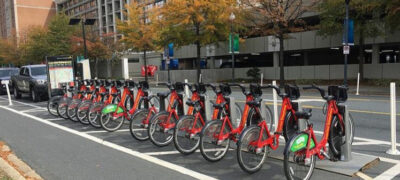Engaging Frontline Employees in Adopting New Transit Technologies Challenges and Ways Forward
- Date: April 13, 2023
Jump to section
2.1 Difficulty Attracting and Retaining Employees
In the current climate, it is difficult to attract and retain staff at US transit agencies. In November 2021, the American Public Transit Association (APTA) published On the Horizon: Planning for Post-Pandemic Travel to help its membership consider challenges the future may bring in light of the aftermath of the COVID-19 pandemic. The topic of staff shortages is featured prominently in the document, and occupations such as vehicle operator and mechanic are mentioned often. Available data on the US transit workforce, such as trends in staff shortages and projections of future staff needs, are limited, as mentioned in a 2019 US Government Accountability Office (GAO) report, Transit Workforce Development: Improved Strategic Planning Practices Could Enhance FTA Efforts, “The extent of future transit workforce needs is unclear due to the absence of transit-specific workforce projections, unclear communication on the data that are available, and because the data that are available do not extend past 2022.” Through APTA’s On the Horizon report, the GAO Transit Workforce Development report, and others, more information is available to better understand why transit staff shortages exist and persist. In On the Horizon, long-standing reasons for staff shortages that were present before the pandemic are referenced, such as retirements, but more attention is given to the challenges that transit agencies currently face on the topic of attracting and keeping employees. These challenges include the:
- Rise in private sector wages during 2020-21, making it more difficult for transit agencies to compete with other job opportunities. At the same time, the cost of living in some parts of the US has risen during the same period, and is slated to continue on that trajectory, resulting in additional wage pressure.
- Lack of remote work and flexible schedules, with transit agency work most often done in-person and shift-based—especially for positions such as vehicle operator and mechanic. It is noted in On the Horizon that the desire for these conditions goes far beyond convenience, since at times employees have needed to stay home and care for children in remote schooling or have had health concerns for themselves or their loved ones. “Persistent concerns about disease exposure” is mentioned in the same document in relation to reasons why ridership may decline, but the same concerns are likely in the minds of frontline employees as well.
- Layoffs that took place during 2020-21 in the transit industry, in part due to financial decline related to reduced ridership during the pandemic, some of which were done with the intent to rehire once the agency’s financial situation improved.
- Continuing trends in retirement, with some staff retiring earlier than anticipated during the COVID-19 pandemic.
In Building an Apprenticeship and Training System for Maintenance Occupations in the American Transit Industry, published by the Transportation Learning Center in 2009, it is stated that transit systems in the US are “facing unprecedented challenges in obtaining the workforce skills needed to address pervasive technological changes, increasing retirements of skilled workers, and rapid industry growth… an inadequate flow of new recruits is entering the industry. Transit maintenance jobs are not considered attractive by many of today’s high school graduates. The general public has an inaccurate perception of transit as an old fashioned, low-tech industry… Problems in attracting recruits in some areas are exacerbated by lack of pay incentives, poorly developed career ladders, and unfavorable working conditions for new hires. The industry is facing these unprecedented challenges with insufficient training capacity.” A table called “Examples of Challenges That Selected Transit Stakeholders Cited in Recruiting and Retaining Transit Workers (2018)” in the 2019 GAO report, Transit Workforce Development, provides further information on the topic as shown in figure 1.
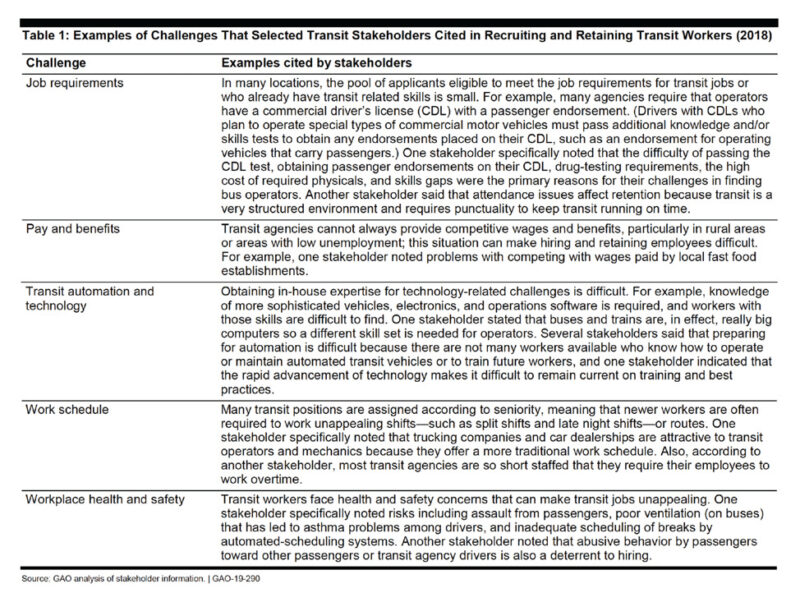
Many of these cited factors speak to issues that are broader than the topic of engaging frontline employees who currently work at a transit agency. If a transit agency is unable to attract new talent to replace retired workers, for example, there is a fundamental problem (i.e., a lack of replacement staff). The fundamental problem must be addressed so that issues like a lack of engagement from current frontline employees can improve. Further, it is possible that the fundamental problem of a lack of replacement staff already is, or becomes in the future, persistent for various reasons. Take, for example, the difficulty of providing competitive wages—such challenges can aid this fundamental problem in becoming persistent, even more resistant to turning the tide. If new talent is difficult to attract, and they are sorely needed in part due to an outflow of retiring staff, having real or perceived barriers such as low wages can make addressing the fundamental problem nearly insurmountable. Some agencies may find that wages must be made competitive to have any chance of maintaining a strong workforce. Even if wages are kept competitive, the issue still might not be resolved entirely. For instance, if a worker is comparing a job in the transit industry to one in another industry with similar pay, the fact that transit jobs tend to lack flexible and remote work could easily be a reason why they choose another industry.
At the same time, working toward improvements in the engagement of frontline employees (i.e., having employees who are more emotionally involved and committed to their work) can be considered from two general points of view. The first is the point of view of a staff member who already works for the agency, while the second point of view is from a potential new recruit to the agency. Due to greater pressure on replacement staff needs related to high rates of retirement, in part, the second point of view is just as important to consider as the first. In the 2019 GAO Transit Workforce Development report, both impending retirements and advances in transit technology were cited as some of the primary challenges facing the US transit workforce, “The operation of transit systems depends on a skilled, qualified workforce, but impending transit worker retirements and advances in transit technology may create challenges for the transit workforce such as finding eligible applicants for transit jobs and obtaining the technology expertise needed.” In Building an Apprenticeship and Training System for Maintenance Occupations in the American Transit Industry, it is explained that “While updating the skills of incumbent workers — especially in electronics — is important, apprenticeship is central to replacing the skilled maintenance workforce on the verge of retirement.”
This Guidebook, therefore, focuses not only on retaining current staff at transit agencies, but also on attracting new staff—strategically developing a talent pipeline of newcomers to the transit industry in general and to transit agencies in particular. Further, it calls for the transit industry to view the influx of new technologies into the industry as an opportunity from a workforce development perspective. Helping newcomers enter the transit industry as technology specialists of various types may be a motivating factor and an impetus for them to select the transit industry over other industries.
2.2 Strengths of the Transit Industry
While there are challenges, the transit industry also has its strengths. A number of reasons why someone might be attracted to beginning work, and remain working, in the transit industry include:
Job Stability
- The field tends to have attractive benefits such as options for retirement and periodic wage increases. Depending on the agency, there may also be defined paths for internal promotions, ongoing education, and other opportunities for advancement. In addition, transit industry jobs often have union representation, which can help protect workers in some cases from adverse events such as layoffs.
- An APTA report from 2015, Workforce Planning: Maximizing the New Reality of a Revolving Workforce, presented a summary of a survey that had 38 responses from transit agencies and companies across the US. “Respondents were asked a number of questions about salary and benefits and their perceived impact on attracting and retaining employees. Two-thirds of survey respondents believed that their benefits are their most effective way to attract and retain employees and two-thirds of respondents also reported that they believe their salary system in place for represented employees was effective in retaining employees.” However, is worth noting that, despite these reports, more than 70 percent said they “were experiencing higher than average turnover concentrated in the front-line positions such as operators and mechanics. With higher turnover occurring at most companies as reported through the survey and salary and benefits packages trending to become less lucrative over time, finding new strategies to attract and retain employees beyond traditional salary and benefits programs is going to become increasingly important.”
Career Potential
- The transit industry provides a viable path for workers who choose to embark on a career without a bachelor’s degree. In some industries, the transit industry included, workers without a bachelor’s degree may end up at risk of doing low-wage, low-skill work with little opportunity for growth or advancement in the future. In a 2018 publication of COWS (a nonprofit “think-and-do tank” based at the University of Wisconsin-Madison), Equity from the Frontline: Worker Voice Leads to a Network of Accessible Apprenticeship Pathways, opportunities for advancement at the Santa Clara Valley Transportation Authority (VTA) in Santa Clara County, California are explained. “People with limited skills but mechanical interest can enter VTA as an operator; transfer to service, station or facilities worker; and work their way into a mechanic or track worker apprenticeship. ‘These jobs now lead to a career, benefits, and better schedule,’ states Carl Hart, Program Graduate.”
- The transit industry has a history of providing apprenticeship programs that combine classroom education, often through a community college or trade school, with on-the-job training to help prepare apprentices for their first job with a transit agency. In addition, these programs have often offered payment to apprentices in exchange for their time investment, with the guarantee of a paid position at the transit agency if they successfully complete the program. In Building an Apprenticeship and Training System for Maintenance Occupations in the American Transit Industry, it is mentioned that TriMet, the transit agency serving the Portland, Oregon metro area, and ATU Local 757 have been partnering to provide apprenticeships since the early 1980’s. The same report references an apprenticeship program that began in 1989 to support workers at Alameda-Contra Costa County Transit District (AC Transit) in partnership with ATU Local 192 in Oakland, California.
- While there is a history of having apprenticeship programs in the transit industry, it has not become a common practice across the entire country. As stated in Building an Apprenticeship and Training System for Maintenance Occupations in the American Transit Industry, “A survey of agencies in selected major urban areas identified fifteen agencies with self-described apprenticeship programs in various stages of development exhibiting a wide range of quality and approaches (Community Transportation Center, 2007).” Having an apprenticeship program demonstrates that a transit agency will invest in the apprentice on the expectation that the apprentice will invest in the transit agency in turn. Apprenticeship programs help those without a bachelor’s degree to learn a trade in a growing industry that needs workers, providing them with career potential without a student loan. At the same time, it helps the transit agency gain new staff members who thoroughly understand their role at the agency and possess the skills they need to succeed.
- The investment that transit agencies make in apprentices, and the investment that apprentices make in themselves and their future through such programs, sets apprentices up for a true career—not a one-off job that may lead to a series of other low-wage, low-skill jobs.
Job Options
- Depending on their position in the transit industry, employees have options to work for other employers—including other transit agencies but also other industries. For example, someone in a bus operator position can later go work for companies that employ bus/coach/large vehicle operators in fields such as shipping and freight transportation or even school systems. A mechanic can work in vehicle repair in many other fields. As they gain ZEB-related skill sets, workers are better able to handle zero emission vehicles, making them even more attractive to industries that are going through a similar ZEB transition process.
- The transit industry, as a whole, should work together to keep employees within the industry; it is far better for transit agencies to compete among each other for talent rather than with other industries. Workers are often aware of the fact that they are gaining valuable skills that can be leveraged in dynamic ways throughout their careers—this may play a part in why a worker picks a certain industry in the first place. Through opportunities for employees to gain valuable, high-tech skills, the transit industry offers its workers greater career flexibility and growth potential over time.
- The potential to gain valuable, high-tech skills likely is, or could be, a selling point in attracting newcomers to the transit industry. Though it may seem counterintuitive (since it sets workers up for more options elsewhere), transit agencies could even consider including this as a selling point in its job marketing to potential new employees. Once an employee has joined a transit agency, the key is to make sure they want to stay there, or in the transit industry at large, with other strategies and tactics that help retain workers. In short, a strategy to attract must be followed by a strategy to retain. This is further explained in section 2.3.
Impactful Work
- At many jobs, including jobs in the transit industry, the day-to-day activities of an employee can seem rote, and it may be easy for an employee to forget about their contribution and how meaningful it is. The US transit industry is the backbone one of the most vital functions in any society—the movement of people to their daily activities—feeding into critical outcomes in social mobility, health, education, and many other realms of people’s lives.
- Furthermore, the more trips taken by transit in the US—as opposed to other more polluting modes—the less negative environmental consequences there are for the movement of people to their daily activities. The positive impact of the US transit industry is local, within the US, but also global—helping the US to lower its carbon footprint overall to world-wide benefit.
- Not all industries can boast this level of societal benefit, and it may be a reason why professionals in the transit industry start working in it in the first place, and why some remain in it for their lifetimes. As Lisa Vickery, VTA Superintendent, explained in Equity from the Frontline, “This is not a slick marketing roll-out. These are people’s lives, hopes, and dreams. They want something that is going to be a career for them. It’s very easy to forget how important work is to people, their sense of selves. This should be held at the forefront.”
In addition, the transit industry has the potential for state-wide and national solutions. This Guidebook refers to the “transit industry” frequently, as opposed to separate, individual agencies, because many of the challenges that agencies have are typically faced by all transit agencies to a lesser or greater degree. The US has national funding, labor, organizational, and research structures in place for the transit industry such as the Federal Transit Administration (FTA), multiple unions including the ATU, the American Public Transit Association (APTA), the Community Transportation Association of America (CTAA), and the Transit Cooperative Research Program (TCRP). States often have their own state-level organizations to support their transit industry and its professionals as well such as the Georgia Transit Association (GTA), New York Public Transit Association (NYPTA), and Washington State Transit Association (WSTA). The transit industry, therefore, has the communication pathways and forums needed to gain input on major challenges to the industry and report back on solutions and paths forward as they develop.
2.3 Ways to Engage Employees
The Guidebook centers on three primary ways to engage employees: establishing a shared vision and purpose, investing in individual employees, and tailoring engagement strategies to both current employees and potential new recruits.
2.3.1 Establishing a Shared Vision and Purpose
As management staff and frontline employees work together, a shared vision of the transit agency’s new transit technology direction is key. When frontline employees fully understand where the transit agency is headed, why they are headed that way, and their role within that direction, they are better able see themselves within the big picture—contributing to higher levels of engagement. The purpose of deploying new technologies at a transit agency typically relates to specific anticipated outcomes. While this is not an exhaustive list of core outcomes for all situations, these three outcomes are often related to technology improvements.
- Higher level of operational efficiency – Technology, depending on the type, has the potential to reduce overall operational costs and enables the agency to allocate financial savings to improve operations and customer service elsewhere.
- Improvements in customer service – Often technology can make transit service information more transparent and accessible or make the service itself faster and more convenient, both of which contribute to the customer service bottom line.
- Reduction in environmental impact – While transit service is typically more environmentally-friendly than, for example, a person driving their personal vehicle, the fossil fuels that historically have been used to run transit service—and the accompanying vehicles—are undergoing an upgrading process to reduce transit’s environmental impact overall.
A newly-adopted technology may contribute to one, two, or all three core outcomes as well as other outcomes not listed. Not only should transit agency management understand precisely how a proposed technology will contribute to this bottom line before committing to it, but they should also be vocal and direct with frontline employees about how the new technology will contribute to these outcomes. Otherwise, new technology can fall into a trap of frontline employees thinking it is being deployed for other reasons such as to make the agency appear more modern or to “keep up with the times.” While these reasons may also be true, which is not necessarily a bad thing, these reasons are likely not very compelling to frontline employees who may see themselves as part of a broader social mission to ensure people have access to affordable, accessible, and environmentally-friendly transportation options.
Communication about technology within transit agencies may fall victim to mixed messaging, such as different managers talking about the technology’s benefits in different and uncoordinated ways, or may even fall into a messaging gap in which the benefits are not communicated at all. With some technology, managers may assume everyone understands why the technology matters, when in actuality, staff may understand only a part or misunderstand entirely. For these reasons, it is important that transit agency management be clear, unified, and precise in their communication about new technology, specifically with frontline employees, in order to keep the entire agency on the same page. Frontline employees of transit agencies need to know where the agency is headed and how their role contributes to that vision; this understanding can help pave the way for an employee to become more engaged (i.e., emotionally involved and committed) with their work.
2.3.2 Investing in Individual Employees
If handled with a targeted approach, new transit technologies can be positioned as a way to help frontline staff further their careers—it can pave the way to internal promotions, position them for opportunities in the US transit industry at large, and enable them to have a solid base in a career as compared to a stand-alone job.
Investing in individual employees can take many different forms. For existing staff, for example, having a mentor to speak with periodically can be a valuable tool in navigating the personal and professional challenges that come up on the job. Section 3.5 of the Guidebook goes into mentorship in further detail. It is also important that existing staff have the opportunity to build a customized career path for themselves, with management’s input, at the agency. This can involve lateral moves to explore different departments and vertical moves within their current position’s trajectory, potentially also involving periods of agency-sponsored training to help them gain the skills they’ll need for the next move. As mentioned in section 2.2 under “career potential,” the US transit industry has a history of providing apprenticeships. While nearly all forms of training are valuable, apprenticeships illustrate perhaps the deepest level of investment a transit agency can devote to an individual. Apprenticeships can be accessed by current staff as well as new staff, and are a primary pathway for the latter to enter not only the transit agency—but the transit industry at large—for the first time.
By taking an active role in positioning individual employees for a positive career outlook, bolstered by employee knowledge of and experience with transit technologies, transit agency management can foster frontline employee engagement by investing directly in their future. When people are invested in, they are much more likely to be emotionally involved and committed to their work (i.e., be engaged employees). Jess Martinez, a Service Mechanic Apprentice and former station maintainer at VTA, explained in Equity from the Frontline why his apprenticeship has been motivating, “Where else can you make money while you learn? Provide for your family as you learn? That brings loyalty.”
2.3.3 Tailoring Engagement Strategies to Both Current Employees and Potential New Recruits
While section 2.3.2 “investing in individual employees” supports the individual experiences of specific staff members, transit agencies also need to consider broad, large-scale strategies that improve the experience of working at the transit agency, and entering the agency for the first time, for all workers in general.
As mentioned in section 2.1, there are two general employee points of view—the point of view of a current staff member and the point of view of a potential new recruit to the agency. In addition, under “job options” in section 2.2, it was stated that a strategy to attract must be followed by a strategy to retain. For current staff members, strategies that support the goal of retaining them at the agency should be the focus. However, for potential new recruits, strategies that support the goal of attracting them to the agency should instead be the initial focus. As the strategy to attract new staff has some success, and potential new recruits become new staff members, an agency should shift gears and focus on retaining them as current staff. In this way, the goals of retaining current staff and attracting new staff become circular and connect with each other over time.
Current employees have a wide range of specific viewpoints depending on their position, the years they’ve been with the agency, their past work experiences, and other factors. A tailored strategy for current employees to foster engagement, and ideally retain them, should be rooted in making improvements in their immediate and long-term experiences at the agency. Potential improvements should be identified through direct employee input, and they should be prioritized based on which ones matter the most to employees—achieving the greatest impact based on their perspectives. Suggested activities and topics for discussion to help guide this process are proposed below, broken down according to the strengths of the transit industry explained in section 2.2. When current employees know they have job stability, career potential, job options, and an important role to play in impactful work, there is a far greater chance of retaining them as employees at a transit agency.
Job Stability
- Ask staff which benefits are most in need of improvement; develop plans to improve them whenever feasible. This can build goodwill between management and frontline employees.
- Ensure that wages keep pace with inflation, at a minimum, and whenever possible, raise wages to keep pace with competitors from the public and private sectors.
- Ask staff for their input on preferences for advancement at the agency. Define paths for internal promotions, both vertically within a certain position and laterally across positions (including from frontline staff to management level). Communicate with employees about how these options can help them progress through the agency over the years.
- Work collaboratively with unions and employees to set mutually-agreeable terms, especially for job protections.
Career Potential
- Advertise apprenticeship programs with current staff so they are aware of other opportunities within the agency into which they can transition.
- Gain feedback from staff on apprenticeship programs they would like to have access to in the future for a better understanding how they want their role at the agency to evolve.
- Identify and plan for training opportunities of other types (i.e., not apprenticeships) to help them learn new skills.
Job Options
- Find out what staff members would like to accomplish over the years; commit to doing what is possible to help them on that path.
- Set up career advice and coaching sessions with workforce development professionals. Ensure that each employee has a documented, customized career path (i.e., personal development plan) for themselves that guides their growth at the transit agency.
- Leverage the skills staff already have, possibly applicable to other departments or, with additional training, as a vertical promotion to help them achieve their desired advancements.
Impactful Work
- Learn why frontline staff find their work meaningful and compelling, by asking them directly through surveys, team meetings, and group discussions. This can help management identify trends and better shape their workforce development practices in those directions.
- Reference the known reasons why frontline work is compelling to staff in communications of all types on a daily basis in order to remind them why their work matters.
Potential new recruits to a transit agency generally fall into four groups. Each group would share similar viewpoints based on their shared interests as shown in figure 2.
- Group 1: New to the transit industry and just leaving high school (or potentially with some trade school/community college/university experience)
- Group 2: New to the transit industry with some/significant work experience in another industry, but without skills highly valuable to the transit industry
- Group 3: New to the transit industry with some/significant work experience in another industry with skills highly valuable to the transit industry
- Group 4: Previously working in the transit industry for another agency
A tailored strategy for the engagement of potential new recruits aimed at attracting them to work at a transit agency—perhaps even the transit industry at large—would involve first identifying clear and logical ways that they could enter the transit agency. A multi-level, targeted pathway into the agency must be designed, implemented, and communicated to the recruits. Communication-related activities such as messaging and targeting would be tailored to the diverse interests and access points of group 1, group 2, group 3, and group 4; the groups would enter the pathway at different levels as shown in figure 3.
When potential new recruits can hear about and understand pathways for them to enter a transit agency for the first time, there is a far greater chance of attracting them to become new employees of a transit agency. While including the topics of job stability, career potential, job options, and impactful work in initial messaging to them, so they have a clear and compelling reason “why” for being interested in a transit agency, understanding that there is a clear path for them into the agency answers their next question, “how” can I successfully enter the agency? Both “why and how” questions should be easily answerable by diverse potential new recruits—this is the foundation needed for them to think that a transit agency may be a potential match for them and their career aspirations.
Level 1: Basic Education
Level 1, the entry level of the pathway, would involve educating workers who are not familiar with the transit industry, have little professional experience, and lack basic skills to complete transit-related work tasks. Typically, members of groups 1 and 2 would enter at level 1, which would involve beginning with an apprenticeship program, the classroom education component in particular, to teach them the basics they need to know in order to do the work.
Level 2: Skill Gap Training
Level 2 would involve training recruits in order to address gaps in their skills, either to complete the final stages of classroom education within the apprenticeship program (the next step for groups 1 and 2 after completing level 1), or as a stand-alone training effort. The stand-alone training effort would be developed for specific audiences such as those in group 3 who should not begin at the ground level in level 1, since the valuable skills they have are already highly applicable to the transit industry.
Level 3: On-the-job Training & Mentorship
Level 3 would involve on-the-job training and mentorship, either as the finishing stage of the apprenticeship/training program (the final step for groups 1, 2, and 3), or as stand-alone efforts targeted, for example, at members of group 4—someone who previously worked in the transit industry for another agency. As a new member of the transit agency, even if they had a similar role at another agency, they would still need to have a transitional learning period that enables them to understand how the new agency works through on-the-job training. In addition, mentorship programs have been shown to be very valuable to transit agencies, as explained further in section 3.5. During level 3, mentorship programs would begin; they often continue into the first few years of employment or further—long after level 3 of the pathway to the agency has been completed.
